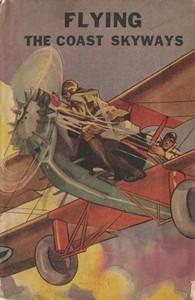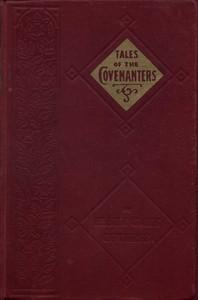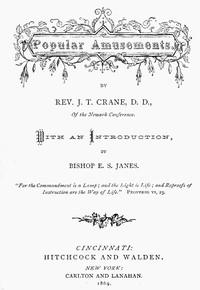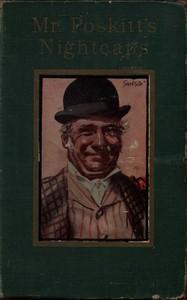|
|
Read this ebook for free! No credit card needed, absolutely nothing to pay.Words: 52631 in 23 pages
This is an ebook sharing website. You can read the uploaded ebooks for free here. No credit cards needed, nothing to pay. If you want to own a digital copy of the ebook, or want to read offline with your favorite ebook-reader, then you can choose to buy and download the ebook.

: Flying the Coast Skyways; Or Jack Ralston's Swift Patrol by Newcomb Ambrose - Detective and mystery stories; Air pilots Juvenile fiction; Aeronautics Juvenile fiction; Secret service United States Juvenile fiction@FreeBooksWed 07 Jun, 2023 INTRODUCTION 11 INDEX 110 At the request of many of those who attended my course of lectures, delivered before the University of Oxford during the Lent Term, 1909, I have collected and illustrated some of the more important notes dealing with the Development of European Defensive Armour and Weapons. These pages are not a mere reprint of those lectures, nor do they aspire to the dignity of a History of Armour. They are simply intended as a handbook for use in studying history and a short guide to the somewhat intricate technicalities of the Craft of the Armourer. CHARLES FFOULKES. OXFORD, 1909. The following works should be consulted by those who wish to study the subject of Armour and Weapons more minutely:-- INTRODUCTION As a subject for careful study and exhaustive investigation perhaps no detail of human existence can be examined with quite the same completeness as can the defensive armour and weapons of past ages. Most departments of Literature, Science, and Art are still living realities; each is still developing and is subject to evolution as occasion demands; and for this reason our knowledge of these subjects cannot be final, and our researches can only be brought, so to speak, up to date. The Defensive Armour of Europe, however, has its definite limitations so surely set that we can surround our investigations with permanent boundaries, which, as far as human mind can judge, will never be enlarged. We can look at our subject as a whole and can see its whole length and breadth spread out before us. In other aspects of life we can only limit our studies from day to day as invention or discovery push farther their conquering march; but, in dealing with the armour of our ancestors, we know that although we may still indulge in theories as to ancient forms and usages, we have very definitely before us in the primitive beginnings, the gradual development, the perfection, and the decadence or passing away, an absolutely unique progression and evolution which we can find in no other condition of life. The survival of the fittest held good of defensive armour until that very fitness was found to be a source rather of weakness than of strength, owing to changed conditions of warfare; and then the mighty defences of steel, impervious to sword, lance, and arrow, passed away, to remain only as adjuncts of Parade and Pageant, or as examples in museums of a lost art in warfare and military history. As an aid to the study of History our interest in armour may be considered perhaps rather sentimental and romantic than practical or useful. But, if we consider the history of the Art of War, we shall find that our subject will materially assist us, when we remember that the growth of nations and their fortunes, at any rate till recent times, have depended to a large extent on the sword and the strength of the arm that wielded it. There is another aspect of historical study which is of some importance, especially to those who stand on the outskirts of the subject. This aspect one may call the 'realistic view'. The late Professors York Powell and J. R. Green both insisted on the importance of this side of the subject; and we cannot but feel that to be able to visualize the characters of history and to endow them with personal attributes and personal equipment must give additional interest to the printed page and other documentary evidences. When the study of defensive armour has been carefully followed we shall find that the Black Prince appears to us not merely as a name and a landmark on the long road of time; we shall be able to picture him to ourselves as a living individual dressed in a distinctive fashion and limited in his actions, to some extent, by that very dress and equipment. The cut of a surcoat, the hilt of a sword, the lines of a breastplate, will tell us, with some degree of accuracy, when a man lived and to what nation he belonged; and, at the same time, in the later years, we shall find that the suit of plate not only proclaims the individuality of the wearer, but also bears the signature and individuality of the maker; a combination of interests which few works of handicraft can offer us. From the eleventh to the end of the fourteenth century we have but a few scattered examples of actual defensive armour and arms; and the authenticity of many of these is open to doubt. The reason for this scarcity is twofold. Firstly, because the material, in spite of its strength, is liable to destruction by rust and corrosion, especially when the armour is of the interlinked chain type which exposes a maximum surface to the atmosphere. A second reason, of equal if not greater importance, is the fact that, owing to the expense of manufacture and material, the various portions of the knightly equipment were remade and altered to suit new fashions and requirements. Perhaps still another reason may be found in the carelessness and lack of antiquarian interest in our ancestors, who, as soon as a particular style had ceased to be in vogue, destroyed or sold as useless lumber objects which to-day would be of incalculable interest and value. For these reasons, therefore, we are dependent, for the earlier periods of our subject, upon those illuminated manuscripts and sculptured monuments which preserve examples of the accoutrements of the twelfth and thirteenth centuries. Of these, as far as reliability of date is concerned, the incised monumental brasses and sculptured effigies in our churches are the best guides, because they were produced shortly after the death of the persons they represent, and are therefore more likely to be correct in the details of dress and equipment; and, in addition, they are often portraits of the deceased. Free books android app tbrJar TBR JAR Read Free books online gutenberg More posts by @FreeBooks

: Popular Amusements by Crane J T Jonathan Townley Janes Edmund S Edmund Storer Author Of Introduction Etc - Amusements Religious aspects@FreeBooksWed 07 Jun, 2023
|
Terms of Use Stock Market News! © gutenberg.org.in2025 All Rights reserved.






